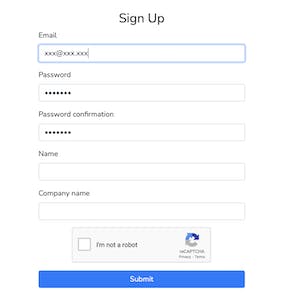Get ahead in the NFT Market: Your guide to monitoring NFT Marketplaces with Bitquery.io

Introduction
As a blockchain enthusiast, you're probably familiar with NFTs, which have gained a lot of popularity in the world of cryptocurrencies and blockchain. The way we view ownership and value in the digital world is evolving because of these distinctive digital assets, and I believe traders and investors require a tool to track and evaluate the market as NFTs become more prevalent.
An effective blockchain data provider that can be used to track and examine the NFT market is Bitquery.io.
Bitquery.io is a blockchain data provider that offers powerful analytics tools to track and analyze various blockchain networks, including Bitcoin, Ethereum, Binance Smart Chain, and more. Crazy right? It allows users to build custom queries and visualizations to track and extract insights from blockchain data.
In this 3 step guide, I'll demonstrate how to develop searches on Bitquery.io that may be used to examine transaction volume, price, trade, and other factors.
Step 1: Create an account
You must first register for a Bitquery.io account to create queries. Visit the ide.bitquery.io website, and then click "Not registered" in the bottom left to get started. To create an account, enter your information and follow the instructions.

Step 2: Create a query
After creating your account, you may begin building queries to track the NFT market. For example, this specific query retrieves data from a blockchain dataset. it's querying for transfers of a specific non-fungible token on the Ethereum network.
query MyQuery {
EVM(dataset: combined, network: eth) {
Transfers(
orderBy: {descending: Block_Time}
where: {Transfer: {Currency: {Fungible: false, SmartContract: {is: "0x005e6b6776108f4c9e9c5c1259b9554036f8d55e"}}}}
) {
Block {
Hash
Number
}
Transfer {
Amount
Currency {
Name
Symbol
Native
}
Sender
Receiver
}
}
}
}
Here's a quick walkthrough of what the code does:
The query is named "MyQuery"
It requests data from the "EVM" endpoint of the dataset "combined" on the Ethereum network
It specifies that the data requested should be transfers of a non-fungible token
It orders the results by descending block time (i.e., the most recent transfers appear first)
It filters the results to include only transfers of a specific non-fungible token with the smart contract address "0x005e6b6776108f4c9e9c5c1259b9554036f8d55e"
In summary, this query is requesting data about transfers of a specific NFT on the Ethereum network, ordered by the most recent transfers, and filtered to only include transfers of a specific smart contract address.
Step 3: Analyze the data
Once you've retrieved the data you're interested in, you can analyze it to gain insights into the NFT market. For example, you could use a spreadsheet program like Microsoft Excel or Google Sheets to create a chart of the transaction volume over time.
You could also use Bitquery.io to monitor the price of specific NFTs or a Token.
For example, if you wanted to monitor the price of a Token, you could use the following query:
{
ethereum(network: bsc) {
dexTrades(
options: {desc: ["block.height", "tradeIndex"], limit: 1}
exchangeName: {in: ["Pancake", "Pancake v2"]}
baseCurrency: {is: "0x6679eB24F59dFe111864AEc72B443d1Da666B360"}
quoteCurrency: {is: "0xbb4cdb9cbd36b01bd1cbaebf2de08d9173bc095c"}
date: {after: "2021-04-28"}
) {
transaction {
hash
}
tradeIndex
smartContract {
address {
address
}
contractType
currency {
name
}
}
tradeIndex
date {
date
}
block {
height
}
buyAmount
buyAmountInUsd: buyAmount(in: USD)
buyCurrency {
symbol
address
}
sellAmount
sellAmountInUsd: sellAmount(in: USD)
sellCurrency {
symbol
address
}
sellAmountInUsd: sellAmount(in: USD)
tradeAmount(in: USD)
transaction {
gasValue
gasPrice
gas
}
}
}
}
Specifically, it's querying for the most recent trade of a specific trading pair on the Binance Smart Chain (BSC)
Let's look at what the code does:
It requests data from the "ethereum" endpoint of the dataset on the Binance Smart Chain network ("bsc")
It specifies that the data requested should be the most recent trade of a specific trading pair.
It limits the results to one trade, using the "limit" parameter and sorting by the "block.height" and "tradeIndex" in descending order, meaning the most recent trade will be returned.
It filters the results to include only trades made on the Pancake and Pancake v2 exchanges.
It filters the results to include only trades with a specific base currency and quote currency.
It filters the results to include only trades that occurred after April 28, 2021.
The query returns various data fields related to the trade, including the transaction hash, trade index, smart contract address, currency name, date, block height, buy and sell amounts and currencies, trade amount in USD, and gas information for the transaction.
Conclusion
Bitquery.io is a powerful tool that can help you monitor and analyze the NFT market. By creating queries to retrieve data from the blockchain, you can gain insights into transaction volume, price, trade, and more.
But the potential of Bitquery doesn't stop there. This versatile platform can be used for a wide range of applications beyond NFTs, such as tracking cryptocurrency transactions and monitoring smart contract activity.
So whether you're a developer, investor, or simply interested in the world of blockchain technology, Bitquery is a must-have tool. Try it out today and see the power of data-driven insights for yourself. With this information, you can make more informed decisions about buying and selling NFTs.